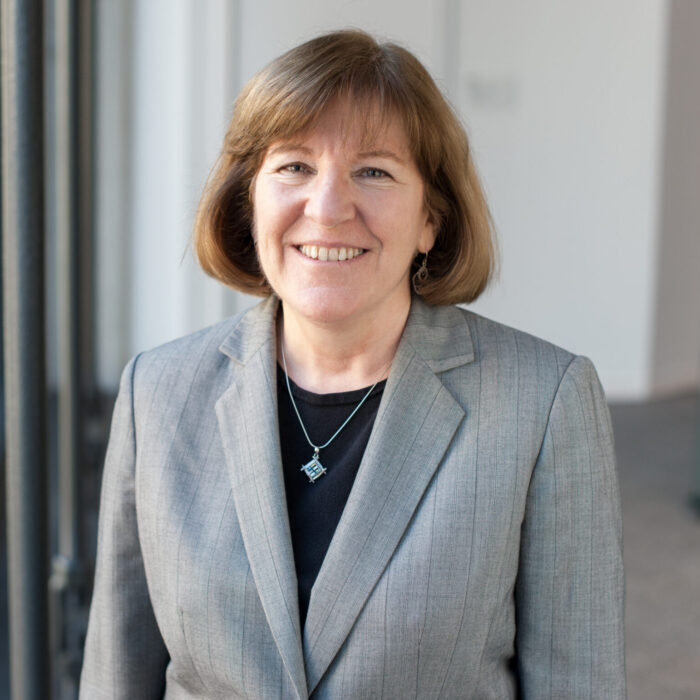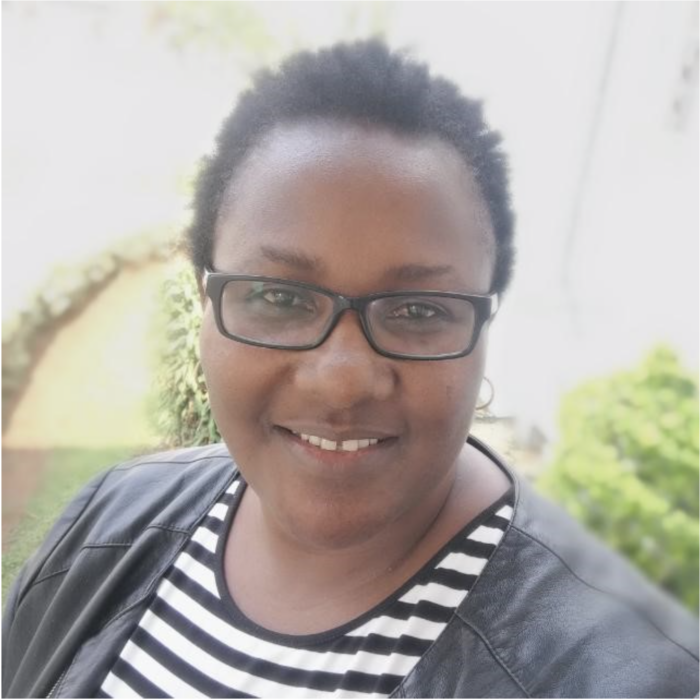In honor of this year’s World AIDS Day theme, “End inequalities, end pandemics, end AIDS,” EGPAF technical experts Dr. Laura Guay and Dr. Judith Kose sat down to share their thoughts about the necessity to end the global inequalities facing children in the fight for an AIDS-free generation.
-
As you know, UNAIDS made inequality in the AIDS response the focus of their latest 2021-2026 strategy, noting the inequities facing children as a key area for concern. From your perspective, what is at the center of inequity faced by children and adolescents living with HIV?
 Dr. Laura Guay
Dr. Laura Guay
There are many factors that contribute to these inequities but I believe that there are two main drivers here: economic and epidemic control. From the early days of the epidemic (before treatment was widely available in most countries), the workforce was being hit hard by illness and death. So, the economic cost of HIV disease progression was felt, especially in countries with high HIV prevalence. There was an emphasis on keeping adults healthy and working: ensuring adult HIV care and treatment services were widely available was the priority. On epidemic control: children are not seen as drivers of transmission of HIV. While for adults, there is more “urgency” for treatment as it is seen as both important for their health but also for achieving epidemic control by decreasing transmission to others (suppressed viral loads with lifetime treatment greatly reduced transmission across modes of transmission). Children are not engaging in any of the modes of transmission, so are not viewed as individuals who can help us to achieve epidemic control. There are fewer children living with HIV (“only” 1.7 million out of 37.7 million) and their treatment access is considered important only for their own health and not necessarily as playing a role in epidemic control.
-
What outreach or referral techniques have been successful in the past? How can those techniques be adapted during the COVID pandemic to connect to hard-to-reach populations?
 Dr. Judith Kose
Dr. Judith Kose
- Integration of HIV services within community outreach: immunization outreach can be adopted during the COVID pandemic and beyond to integrate HIV services such as ARV dispensing, follow-up HIV and viral load testing, adherence services in on-going community activities to reduce facility visits, shorten time in close contact but ensure decentralized outreach in a non-stigmatizing way.
- The implementation of family testing, as well as family-centered models of care, accompanied by community outreach/community ART groups (e.g., peer-led psychosocial support models that can ensure continued access to community case management and identification to the hard to reach populations).
- The use of satellite sites / mobile clinics to reach communities: HIV services can be integrated within these satellite / mobile sites. They would, however, need resources such as trained staff, relevant equipment and to ensure sufficient stock of ARVs, as well as medications to treat opportunistic infections.
- The use of task shifting / task sharing: Considering that the COVID pandemic has led to the repurposing of HIV and TB trained staff, with a gap in HIV human resources, task shifting (e.g. using lay health workers to offset the demands such as counseling, administering tests from clinicians) can help ensure provision of comprehensive quality services and achieve epidemic control in many settings and can be further scaled up to ensure nurse-led ART initiation and lay staff support for counselling and follow up- in areas with limited human resources.
- The standardization of guidance and follow-up for completed referrals, including partner mapping for referrals and development of referral directories: this would enable us to ensure individuals at risk of HIV or living with HIV are linked to treatment and would help us identify those who didn’t pass through the continuum of care.
- The implementation of peer counselors or expert clients to follow-up and ensure utilization of ongoing outreach services and support engagement and re-engagement in care.
-
What program or service, or set of services in pediatric HIV service delivery do you feel has been a gamechanger in the field over the last 30 years?
Dr. Laura Guay
- First and foremost, the scale-up of PMTCT services, globally, has been a gamechanger in that there are far fewer children and adolescents living with HIV (that contracted HIV in-utero, during delivery or through breastmilk, which is how 90% of children contract HIV) that need HIV care and treatment services over the course of their lives.
- Secondly, the development of diagnostics that allow us to diagnose HIV in infants (which was elusive early in the epidemic) with the subsequent iterations over the years such as point-of-care early infant diagnosis: this game-changing technology gives caregivers immediate results to HIV status in their young children as well as critical early access to treatment.
The scale-up of PMTCT services, globally, has been a gamechanger. There are far fewer children and adolescents living with HIV. Dr. Laura Guay
Dr. Judith Kose
- Availability of antiretroviral drugs (and free for most of those in the global south) for children, which simply wasn’t the case not very long ago. Also, the evolving shifts in ARVs for children: we’re seeing innovations in treatments (increased effectiveness, palatability, etc.) and these improvements lead to optimized clinical outcomes.
- Implementation of psychosocial support (PSS) for children and adolescents and improved engagement with caregivers and scale up of adolescent-friendly health services.
-
What should the families of children and adolescents know about inequity in HIV services? What approaches – programmatic, research, community or advocacy based – do you think would be most effective to combat existing inequities?
Dr. Laura Guay
While we still have a considerable way to go, we have come a very long way from the early days when few children living with HIV survived past the age of five years. So, the inequity gap has narrowed but we have stalled more recently due to sentiment that pediatric HIV is no longer a significant problem. It may be much less visible to those in the global north, but we need to accelerate our efforts to ensure every child living with HIV is identified and receives the treatment and services needed to allow them to live a long and productive life, not ease up in our approach to children. But while advocacy is key, none of the four approaches is the ‘most effective” alone. We need all elements – including:
- Stronger programs,
- More pediatric/adolescent focused research,
- Better community knowledge/engagement, and
- National and international advocacy to work together if we are to effectively address the inequities in HIV services for children and adolescents.
-
What approaches – programmatic, research, community or advocacy based – do you think would be most effective to combat existing inequities?
We must scale-up differentiated services to children and adolescents, and we need increased advocacy for research funding for pediatric HIV services. Dr. Judith Kose
Dr. Judith Kose:
Approaches that would be most effective to combat existing inequities would focus on the following steps:
- Combating stigma and discrimination in any and all forms for children and adolescents with HIV
- Ensuring the provision of services tailored for children and adolescents while engaging them for input and agency to guide on what works for them
- Implementing activities to address unequal access to HIV testing, treatment, and prevention products and services
- Addressing HIV related violence among adolescent girls and boys
By taking these steps, we can ensure accessible avenues and provision of comprehensive quality services regardless of age, gender, orientation. As a result, we can guarantee the inclusion of children and adolescent at all levels- including the selection or research eligibility criteria, development of priority interventions, and selection of community resources to participate in development and monitoring. At the same time, we must scale-up differentiated services to children and adolescents. Finally, we need increased advocacy that prioritizes more research funding for pediatric HIV services.
Dr. Laura Guay is both the Vice President for research at the Elizabeth Glaser Pediatric AIDS Foundation (EGPAF) and research professor at The George Washington University (GWU) Milken Institute School of Public Health.
She received her M.D. from GWU and completed a pediatrics residency at Rainbow Babies & Children’s Hospital and Case Western Reserve University (CWRU) in Cleveland, Ohio. She was a visiting lecturer at Makerere University in Kampala, Uganda, and then returned to CWRU to complete her fellowship in pediatric infectious diseases.
Dr. Guay spent seven more years in Uganda, where she worked on the landmark HIVNET 012 trial, which determined the effectiveness of single-dose nevirapine in preventing mother-to-child transmission of HIV. Her previous research focused on identifying interventions to reduce HIV transmission in breast-feeding infants, including passive and active HIV vaccines.
Her current research focuses on how to translate key scientific breakthroughs in HIV prevention and treatment in children and families into low-and-middle income settings. Dr. Guay provides leadership and support to a broad range of research activities at EGPAF, working with strong multidisciplinary teams in the US and Africa to identify priority research questions and generate high quality evidence to improve programs and inform policy.
She serves as a member of the Scientific and Technical Advisory Committee (STAC) of the International AIDS Society “Collaborative Initiative for Paediatric HIV Education and Research (CIPHER)”, the NIH Fogarty/PEPFAR Adolescent HIV Implementation Science Alliance Steering Committee, and the NIAID HIV/AIDS Clinical Trials Networks Strategic Working Group.
Dr. Judith Kose-Otieno is the Associate Director, Pediatric Services for the Elizabeth Glaser Pediatric AIDS Foundation (EGPAF). She provides strategic direction at EGPAF for improving pediatric HIV services including TB and other comorbidities.
Judith is a pediatrician and specialist in pediatric infectious diseases with over 18 years’ experience in public health; HIV and TB treatment; execution of clinical programs; and implementation research.
She has supported different country programs including in the development of guidelines, national training curricula for healthcare workers as well as in implementation of comprehensive high quality, evidence informed programs. Judith has an advisory role in several global platforms and has supported many countries and projects on Pediatric Treatment Optimization efforts and is a member of the Global secretariat for the Global Accelerations for Pediatric formulations (GAP-f). Judith was the recipient of the 2006 International Research Health Award from The American Pediatric Association.
Judith is a PhD candidate at Erasmus MC in Rotterdam in the Department of Viroscience. Her focus is on Pediatric and Adolescent HIV treatment outcomes.




